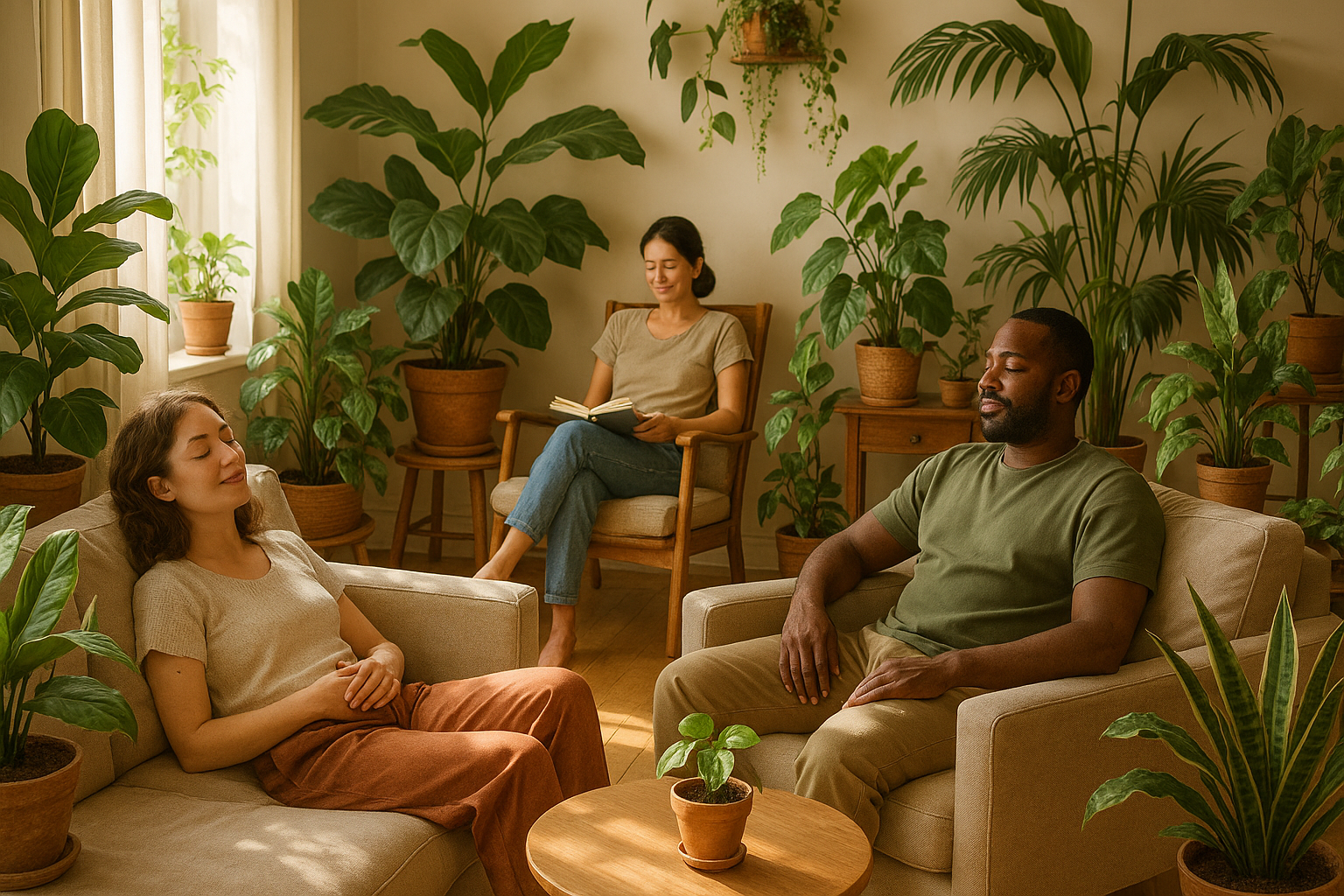Transform your wedding with affordable yet luxurious floral arrangements by using creative...
Best Indoor Plants for Mental Health and Well-being

Learn which indoor plants support mental health, well-being, and stress reduction.
How indoor plants scientifically influence mood, anxiety, and restorative wellness
In a world that feels increasingly fast-paced and digital, indoor plants offer a practical path to reclaiming calm and clarity. Multiple scientific studies demonstrate the powerful positive effects of living greenery on the human mind: indoor plants not only brighten up home or office interiors, but can measurably reduce stress, support mental focus, and even improve sleep. The act of nurturing a plant—watering, adjusting sunlight, repotting—anchors us to the present, gently combating anxiety and the fatigue associated with constant screen exposure. Even short ‘green breaks’ spent admiring or tending to indoor foliage have been shown to lower heart rate and blood pressure. As urban living often means less access to nature, filling your living environment with houseplants offers both visual comfort and meaningful psychological boosts. Among the most praised benefits are their ability to filter indoor air, produce a subtle sense of accomplishment, and foster a more mindful, restorative atmosphere. The impact is universal: adults, teens, and older adults all stand to gain from bringing even a simple potted plant indoors. For more details, see this major NIH review.
Best plant choices for relaxation, mood boost, and health—plus practical placement tips
When selecting indoor plants to support wellness, prioritize varieties that are easy to care for, have proven stress-reducing effects, or provide a sense of accomplishment as they thrive. Snake plants, for example, are hardy and add structural elegance to a room. Studies have shown that exposure to greenery—even a single potted plant—can lower stress hormones and boost mood. Peace lilies, with their lush leaves and white blooms, contribute to emotional calm while purifying air, making them ideal for bedrooms or meditation areas. Pothos and philodendron, versatile trailing plants, are visually soothing and well-suited for shelves or hanging baskets where their foliage gently cascades. For offices, consider resilient species like ZZ plants, which thrive in low light and tolerate neglect but still offer the restorative, ‘nature connection’ benefits that help buffer daily anxiety. Lastly, consider adding lavender or jasmine—aromatic plants whose subtle scents are associated with relaxation and improved sleep quality. When placing wellness-oriented plants, focus on high-visibility, high-traffic spaces. Grouping several plants together can amplify the effect (sometimes called the ‘indoor jungle’ or biophilic design approach), giving the impression of natural abundance. Consider the interaction of greenery with sunlight, fresh air, and personal study or rest zones to maximize benefit. For added impact, choose decorative pots that complement your space, and dedicate specific ‘plant corners’ in your living room, bedroom, or workspace for rest, reading, or quiet reflection. NIH study.
How to create wellness-supporting indoor plant zones at home or in workspaces
Creating intentional plant zones for wellness in your home involves paying attention to comfort, aesthetics, and accessibility. Begin by surveying your routines: where do you spend the most time, and where do you feel the most stress? These are ideal locations to introduce plants—with desk corners, entryways, or bedside tables offering natural habitat for your new green companions. Aim for a mix of leafy and flowering plants to create visual interest. Build small groupings at different heights (using stands or shelves) to add lushness and a sense of privacy or calm. In family rooms, cluster several medium-sized pots to mark a distinct relaxation area—a visual cue to ‘unplug’. In workspaces or study nooks, keep at least one tactile, easy-care specimen (like a rubber tree or monstera) within arm’s reach. These tactile interactions, such as gently touching leaves or tending to watering, boost connection and reduce anxiety. Consider ‘plant therapy’ routines—watering, misting, pruning—not as chores, but as ritualized self-care practices. For workplaces, advocate for communal greenery in common zones: clustered planters brightening lobbies, partitions, or windowsills. Even artificial light can support robust growth for many indoor species. Personalize each zone with decorative accents, comfortable seating, and soothing artwork to create a holistic wellness sanctuary. For a deeper dive on biophilic work environments, visit Scientific American on plant wellness.